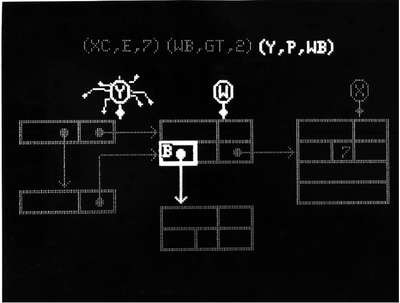The research laboratory, often referred to as “Bell Labs”, was founded under its correct name, Bell Telephone Laboratories Inc., in 1925 and is generally known as one of the creative centers of the USA in the 1960s.
In 1957, Max Mathews developed at Bell Labs the first version of his MUSIC-program. This program (really: a system and notation) was designed to compose musical compositions with the aid of computer technology.
Also A. Michael Noll spent nearly fifteen years at the Laboratories (starting in 1961), doing basic research in areas as: the effects of media on interpersonal communication, three-dimensional computer graphics and animation, human-machine tactile communication, speech signal processing, and aesthetics. In the summer of 1962, he created his first drawing of computer art, Gaussian-Quadratic, which made him one of the earliest so-called “computer artists” (a term, then used quite regularly despite its silly connotation).
Bell Telephone Laboratories was particularly influential in the development of early computer-generated animation. In the 1960s, the laboratories housed an early microfilm printer that was able to expose letters and shapes onto 35mm film. Several artists – among them Lillian Schwartz, Stan VanDerBeek, Edward Zajec – began using the equipment to make animated film.
The Laboratories were heavily involved in the emerging scene of “Art and Technology”. Their contribution to the series of performances entitled ‘9 Evenings: Theatre and Engineering’ (in 1966 in New York) was essential. Initiated by Swedish engineer Billy Klüver and US artist Robert Rauschenberg, the “Nine Evenings” became a landmark in the early development of art, technology, and science collaborations. The group and enterprise, E.A.T., was founded in this context. For the performances, ten contemporary artists joined forces with thirty engineers and scientists from Bell Telephone Laboratories to develop the exhibits.
Ken Knowlton and Leon Harmon created one of the most famous works to come out of the Labs. It was Studies in Perception in 1967.
Others who at least temporarily worked at Bell labs, include Charles Csuri, Ben Deutschmann, Bela Julesz, Aaron Marcus, Lillian F. Schwartz, Manfred R. Schroeder, Claude Shannon.
This is what Ken Knowlton says about his time at Bell:
For people who believe in science, and who still believe in technology, it was the epitome of free exploration into how the world did, or could, work. For those concerned with tangible results, the verdict, albeit delayed, is indisputable: fiber optics, the transistor, Echo and Telstar, radio astronomy including confirmation of the Big Bang. Advances in metallurgy, computational methods, and all manner of information storage, transmission and processing. Bell Labs truly was a national resource, and for anyone who was there or who cared, its decline is one of the great tragedies of the past half century.
You may be familiar with the names of people I knew there: Claude Shannon, John Pierce, William Baker, and a dozen Nobel laureates, McArthur Fellowship “geniuses” and other notables. Like Richard Hamming who, soon after I arrived from MIT in 1962, advised me to “slow down — if everyone here made more than one contribution to the Bell System in his lifetime, the System would be in chaos.” At first startled, I did accept this as an excuse not to obsess over telephones.
An archival site with various documents and images can be viewed here.






